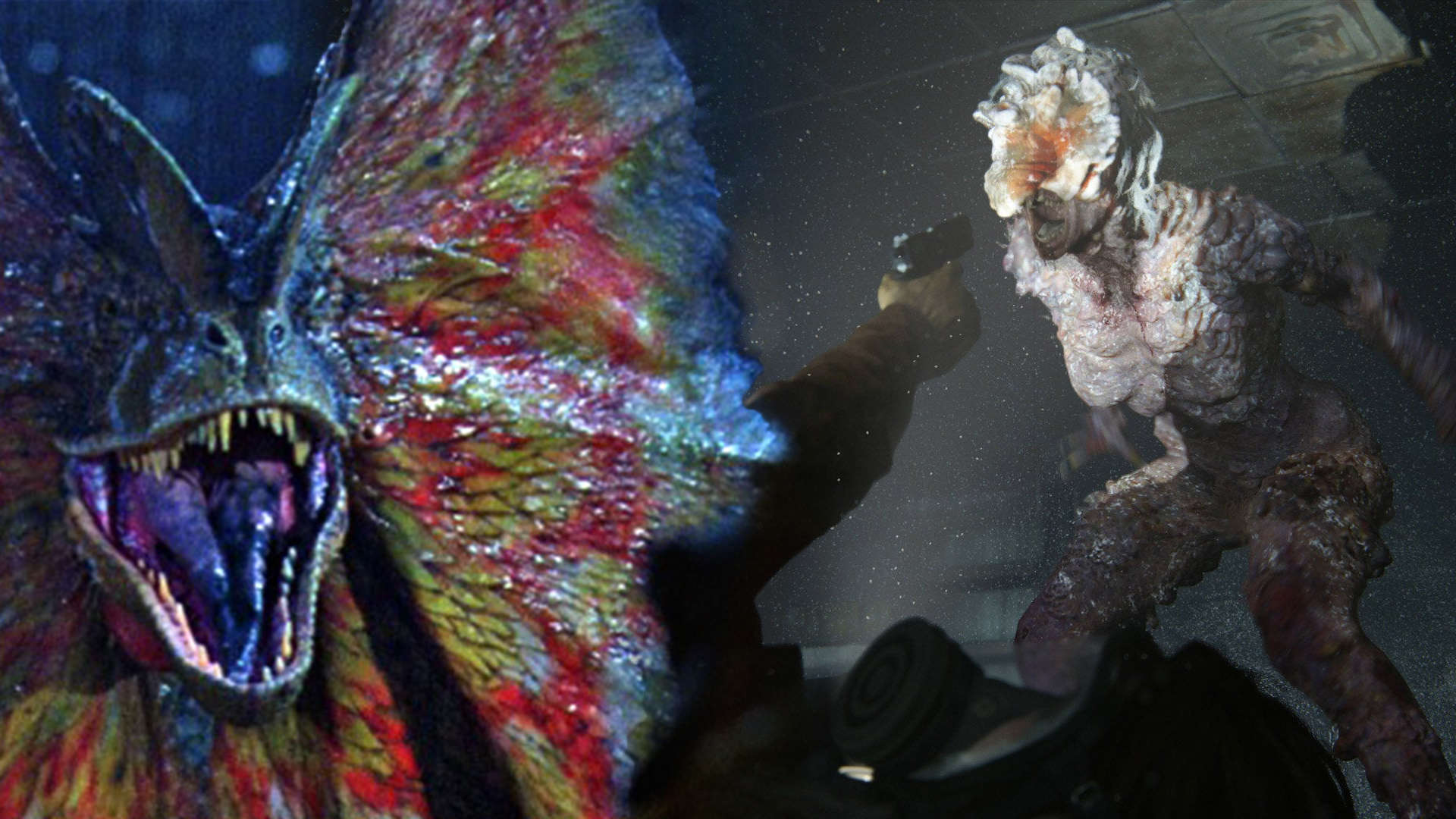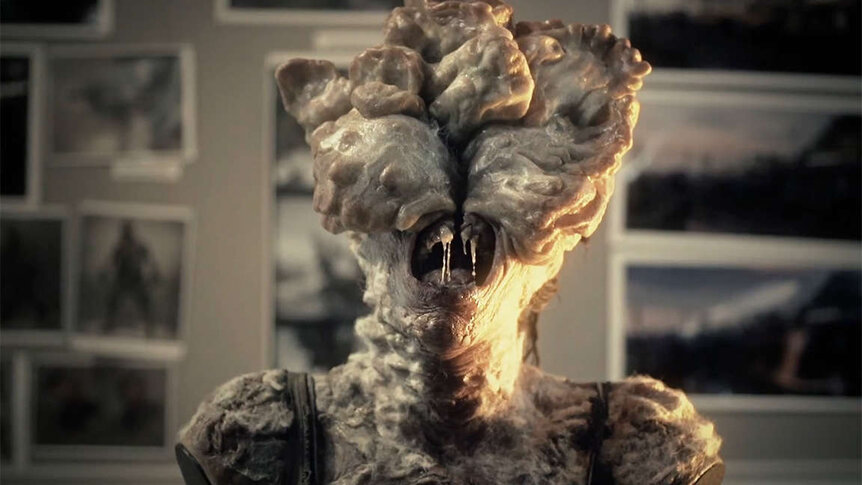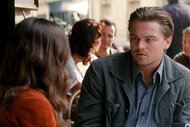Create a free profile to get unlimited access to exclusive videos, sweepstakes, and more!
'A horrifying dolphin from hell': Jurassic Park & Last of Us creators explain what makes monsters sound scary

'Tis the season of scary and spooky sounds: cracking floorboards and rattling windows, torrid screeches and droning moans, whistling wind, and the rumble of fear vibrating in your chest. Sound plays a huge role in horror, be it a video game, movie, television show, or podcast. It controls the mood, ambiance, and can be the deciding factor between something being kind of creepy and truly terrifying. Visuals can be scary, sure, but it’s often the accompanying sound or imagining what something may look like only by hearing it that inspires true fear. Think of the ReDead from The Legend of Zelda: Ocarina of Time, the gurgling from The Grudge, or just the slow, creaking footsteps of a killer trying to find you.
Sound designers are in charge of not only creating solitary sound effects that appear in media, but also crafting the mood of a world, a scene, or even just a specific moment. Their choice of certain sounds can change the entire mood of a video game or scar you for life whenever you hear something similar. Fun, right? Also, they and their team often have to create these sounds from scratch, which may or may not involve recording a very angry goose every now and then.
But what does a goose have to do with scary sounds? Well, you might be surprised, when it comes to creating spooky creature sounds, designers pull from the least likely of sources.
WHAT MAKES A SOUND SCARY?
There are a few answers to this. For one, the absence of sound can be terrifying. Silence, when well placed and well used, is an exceptionally effective tool in creating an atmosphere of foreboding.
“Moments when it's silent before a sound happens really help sell the sound ... [it] gives your ear a break, a breather, and the next terrifying sound seems louder than it really is,” explains sound designer and foley artist Kristina Morss, whose work has been a part of television series Smosh and the upcoming Star Wars: Sith Lords – Legends. Based in Sacramento, California, Morss made the jump from sound designing on sets to creating sound effects as a foley artist. As such, she knows the intricacies and creativity involved in creating sound in all its forms.
“You can take some animal sounds and tweak them with slowing them down and combining some to make creature vocals. Eat some tomatoes messily for some zombie eating sounds. Break some frozen celery for some good bone-breaking sounds. Fruits and vegetables are your friend for gross sounds that are horror-related,” she explains.
The science of making a sound truly scary often lies in the frequency. Frequency is essentially the pitch or tone of a sound. A higher-frequency sound is high in pitch, sometimes squeaky or shrill, and lower-frequency sounds are tones that rumble, drone, or cannot be heard at all.
Horror makes particular use of low-frequency sounds, especially those not able to be heard by the common human ear, which bottoms out at 20 hertz (Hz). These are known as Infrasounds. They are sounds too low to be heard but can still be felt. Infrasonic vibrations are used to create anxiety and unease and are often attributed to what people feel when they report ghost sightings. Low-frequency sounds that are distinguishable are used to create size and breadth. They can make something sound bigger and more intimidating.
Alternatively, higher-frequency sounds have a scream element that ramps up a more obvious, but still legitimate, fear.
“One of my favorites is the Aliens motion tracker scanner sound. It's so simple, yet so terrifying. Every time I hear it, my heartbeat quickens,” Morss says. As a sound from horror that has stayed with her, she says the trick to it is the rising tone, giving it that sense of urgency. “You feel just like the characters, that it's coming for you and there's nowhere to run.”
This is a perfect example of how high frequency can create a sense of panic and fear. Higher-frequency sounds elicit a danger response in humans, hence why fire alarms use a high-pitched beeping and sirens are higher-pitched, as well; they’re meant to grab attention and to alert you that something is wrong.
This comes particularly into play when designing sounds for creatures, be it dinosaur or zombie.
VELOCIRAPTORS, DOLPHINS, AND WALRUSES, OH MY!
When Academy Award-winning sound designer Gary Rydstrom was handed the reins for the sound department of Steven Spielberg’s Jurassic Park, he had a monumental task ahead of him. He had to figure out what dinosaurs sounded like.
There is a famous history of creature sounds in Hollywood that Rydstrom felt a bit intimidated by. The sounds for Godzilla were made by scraping a glove soaked in pine tar on a cello — a more mechanical approach compared to King Kong's sounds, which were a lion’s roar slowed down and simultaneously played backward and forward. The latter was what Rydstrom wanted to emulate: an organic sound using real animals. The audience had to believe the dinosaurs were real, so they needed to sound like they could actually exist. This meant less processing and more layering of various animals at different frequencies.
“The velociraptor of all the dinosaurs had by far the most elements,” Rydstrom told SYFY WIRE. Not just a dozen, but more like 20 or 30. Breathing from a horse, a raspy call from an unfortunately de-barked dog that lived next door, a hoot from an African crane, a hiss from a very angry goose, and a “great grunt” from a tortoise.
“The main scream, when it attacks, which is kind of the key element for making it scary, was orchestrated with low-medium-high elements to blend into a singular voice,” Rydstrom explains. It was the balance of all these frequencies that gave the raptors their characteristic screech that continues to haunt so many of our nightmares. The bottom end was a walrus, yes, a walrus. The high-frequency element? A teenage male dolphin recorded underwater with a hydrophone. Put these recordings together and give the creature the body of a 9-foot dinosaur with rows of razor-sharp teeth and you’ve got yourself something quite terrifying.
“I think there's something about that scream element that makes you scared, and so what I tried to do is add it to the lower-frequency sound that made it not only a scary screaming sound, but a scary screaming sound from something big,” Rydstrom says. This was particularly true for the T. rex, which needed to sound larger than life.
Rydstrom didn’t talk too much with paleontologists because they didn’t have an idea of what the dinosaurs sounded like either. However, he did read Animal Talk, by Eugene Morton, to get a better idea of what makes animals sound friendly or scary, and it often came down to the pitch. A pure pitch, like a hoot, is musical and friendly. Raspy sounds are pink noise and white noise, which can immediately put you on edge and scream danger. This was particularly useful when it came to the Dilophosaurus.
“That's a fun one because it's got a split personality,” Rydstrom says with a laugh. The cute part of the Dilophosaurus is the cooing and hooting of a swan, but when it came to the attack, it was all in the rattlesnake. The screech that accompanies the attack is from a parrot. “It goes from pure frequency to pink noise frequency, and that tends to scare you. Plus it spits on you. So that's not good either.”
THE HORRIFIC SOUNDS OF THE INFECTED
In terms of video games, there is one creature in particular that seriously freaks its players out: the Infected from The Last of Us series, especially the Clickers. The games follow the turbulent journey of Ellie across a post-pandemic United States crawling with zombie-like creatures known as the Infected. The Clickers are, possibly, the most famous of these, using echolocation-like clicks to hunt their prey, a sound that ultimately means trouble. The infected creatures were often heard before they were seen and left the players in a constant state of anxiety.
“Sometimes I just wanted to throw my controller down from how scared I was,” Morss explains about her time playing the game. “The sounds of the new infected all around you coupled with the beautifully haunted soundtrack makes for a great horror game.”
It’s a statement that would undoubtedly please Naughty Dog sound designer Beau Jimenez, who worked on The Last of Us: Part II. The series is one ripe with horror in its sound design, and planning that sound design, especially for the Infected, required an understanding of the goals of multiple departments working on the creatures.
Jimenez had prior sounds to work off of at least, with the original Clicker sound design having been created by voice actor Misty Lee and the Naughty Dog sound team of Phil Kovats, Derrick Espino, and Erick Ocampo.
“One of the days Phil and Derrick were recording vocals for Clickers, Misty let out the strangest sound. It was that classic vocal-fry clicky inhale that, when Misty does it, sounded like a horrifying dolphin from hell,” Jimenez tells SYFY WIRE.
While the Clickers originated with that team, advances in technology helped Jimenez improve how Clickers and other infected sounded, as well as added realism to their horrific sounds.
“Many Infected animations had a jarring head turn to them or a quick body contort. This looked menacing and was begging for a vocal: a shriek with some clicks, a percussive choke, or a piercing hiss of pain,” he explains. This vocal idea was dubbed the “jolt,” which, because of lag improvements with sound capability of Part II versus the original, became an important element for the Infected. “The perfect synchronization to the pixels added credibility and realism to the Infected, like you truly felt they were humans in agony, wandering aimlessly and endlessly,” he adds.
Much like Rydstrom, Jimenez wanted there to be an organic element to his creatures. He wanted relatable human sounds to pull on sympathies, as well as almost make the Infected sound human while in their relaxed, resting state.
“The sound of the Clicker sleeping is simply the actor’s raw, unprocessed performance. As the Clicker gets more angry and hyped up, like during combat, I start to push the vocals into the monstrous territory,” he explains. From there it’s all in the layering of animals. The Frenzy wind-up and loops are a mix of recordings of birds such as owls, vultures, and birds of prey. Layered in with those are vocal performances from actors, specifically high-pitched shrieks and raspy inhales.
“To give it a visceral sense of realism, I layered ultra-high-fidelity recordings of me gurgling and gagging, which has a sickly, wet character to it and brings such a fantastic quality to the sound,” Jimenez explains. Other elements included recordings of buzzing, dolphin whistles, and rattling magnets. But what is it about the Clickers that make them sound so scary?
“The Clicker is blind and needs to click as a form of echolocation to navigate the space and hunt its prey. The clicking sounds are daunting and something a player is not used to hearing. I feel like they strike a nerve with most folks,” Jimenez offers. “The shrieks exist in a frequency range and pitch that, to me, resembles fingernails on a chalkboard.” And nobody likes that.
THE IMPORTANCE OF SOUND IN HORROR
When it comes to creatures in horror, how they sound is arguably more important than how they look. Sound stimulation can be the deciding factor of whether a monster is forgettable or one that lingers in your mind long after hearing it. Many of Hollywood’s most famous creatures are so well known because of the sounds they made, and just how scary they were.
“We listen in 360 degrees, and part of the reason, evolutionarily, is we're listening for that lion coming up behind us,” Rydstrom explains. In Jurassic Park, the audience and characters often heard the dinosaurs before they saw them, and when it came to an attack, that was where the next level of fear needed to come into play.
“The anticipation of it being around a corner is always so scary,” Morss adds.
So next time you hear something that makes you shiver ... just imagine what may be lurking nearby.



























